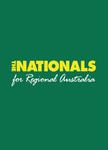2 December 1989 (1989-12-02) 1992 → 25 September 1989 January 1988 49 seats 10 seats Start date December 2, 1989 | 2 March 1988 (1988-03-02) 25 September 1989 30 seats 49 seats 54 seats 27 seats | |
 | ||
Winner Wayne Goss | ||
Elections were held in the Australian state of Queensland on 2 December 1989 to elect the 89 members of the state's Legislative Assembly. This was the first election following the downfall of seven-term premier Sir Joh Bjelke-Petersen at the end of 1987.
Contents
The government was led by Premier and leader of the National Party, Russell Cooper; the opposition was led by Opposition Leader and leader of the Labor Party, Wayne Goss, whilst the Liberal Party was led by Angus Innes.
The National government, which had been in power since the 1957 election and had governed in its own right since the dissolution of the state coalition at the 1983 election, was defeated; the election was a landslide win for the Labor Party, which gained 24 seats. Labor also won more than 50% of the primary vote. At the time, it was the worst defeat of a sitting government in Queensland history.
Campaign
The Nationals' fortunes had dwindled significantly since the 1986 election. Soon after his attempt to become Prime Minister (the "Joh for Canberra" campaign), foundered, Bjelke-Petersen was deposed in a party room coup led by Health Minister Mike Ahern. After trying to hold onto power for four days, Bjelke-Petersen retired from politics, and Ahern was sworn in as his successor.
The shadow campaign began in late 1988 with television advertisements depicting Labor and its leader, Wayne Goss, as "The Only Change for the Better". A string of policy papers were released on a range of themes emphasising responsible economic management and efficient, honest administration. While they maintained a positive and professional public opinion and consistently led opinion polls, neither the media nor the electorate appeared to believe they could win.
The Liberals, who had been on the crossbenches since pulling out of the Coalition in 1983, launched a series of newspaper advertisements in March 1988 under the banner "Let's Put It Right". They were in a curious position, however, as a collapse in National support in urban South East Queensland would more than likely deliver winnable seats for the party to Labor.
On 1 April 1989, a non-partisan group called "Citizens for Democracy" gained some publicity by cutting a birthday cake to commemorate the 40th anniversary of the Electoral Districts Act 1949, which had established electoral malapportionment in Queensland, which was seen as unfairly benefitting the Nationals. Both the Labor and Liberal parties favoured "one vote one value" electoral reform.
On 3 July 1989, the Commission of Inquiry into Possible Illegal Activities and Associated Police Misconduct (more commonly known as the Fitzgerald Inquiry after its chair, Tony Fitzgerald QC) handed down its report. It found links between criminal and political networks, and that corruption in Queensland's public life was widespread, commonplace and organised. It made numerous recommendations aimed at reforming the police and criminal justice system and at establishing independent institutions to monitor, report and act on reforms in the short term, and their operation on an ongoing basis. Ahern committed to implement the Report in its entirety.
By September, opinion polls were suggesting the Nationals had about half the support they had achieved at the 1986 election. A Newspoll taken after the inquiry's release showed that the Nationals had tumbled to only 22 percent support—the lowest ever recorded for a sitting government in Australia. Additionally, the Nationals suffered large swings at three by-elections, most recently in Merthyr where the Liberals had won the seat from the Nationals despite the latter putting forward a high-profile candidate and an expensive campaign. On 22 September, Police Minister Russell Cooper toppled Ahern in a party room coup, and was sworn in as premier three days later.
Cooper led the National Party into the 1989 election with traditional National focuses: law and order, social conservatism, and attacks on the federal Labor government, in particular related to interest rates. The Nationals produced a number of controversial advertisements, one of which alleged that the Labor Opposition's plan to decriminalise homosexuality would lead to a flood of gays from southern states moving to Queensland. These advertisements were satirised by Labor ads depicting Cooper as a wild-eyed reactionary and a clone of Bjelke-Petersen and/or a puppet of party president Sir Robert Sparkes.
Results
The result was a landslide win for the Australian Labor Party. Brisbane swung over dramatically to support Labor, which took all but five seats in the capital.
Initially, it appeared that the Liberal Party had won the traditionally National hinterland seat of Nicklin, however, the Court of Disputed Returns overturned that result and awarded the seat to the National Party.
Seats changing hands
Aftermath
In early 1990, the former Premier and leader of the National Party, Mike Ahern, resigned his seat of Landsborough, and the Liberal Party candidate, Joan Sheldon, won the subsequent by-election. Angus Innes, the former leader of the Liberal Party, also resigned his seat of Sherwood, and the Liberal Party won the subsequent by-election which was held on the same day as the Landsborough by-election. Joan Sheldon led the Liberal Party to the 1992 election.
A major change to electoral legislation saw the zonal system of electoral distribution abolished in favour of a system largely resembling one vote one value in time for the 1992 state election.
